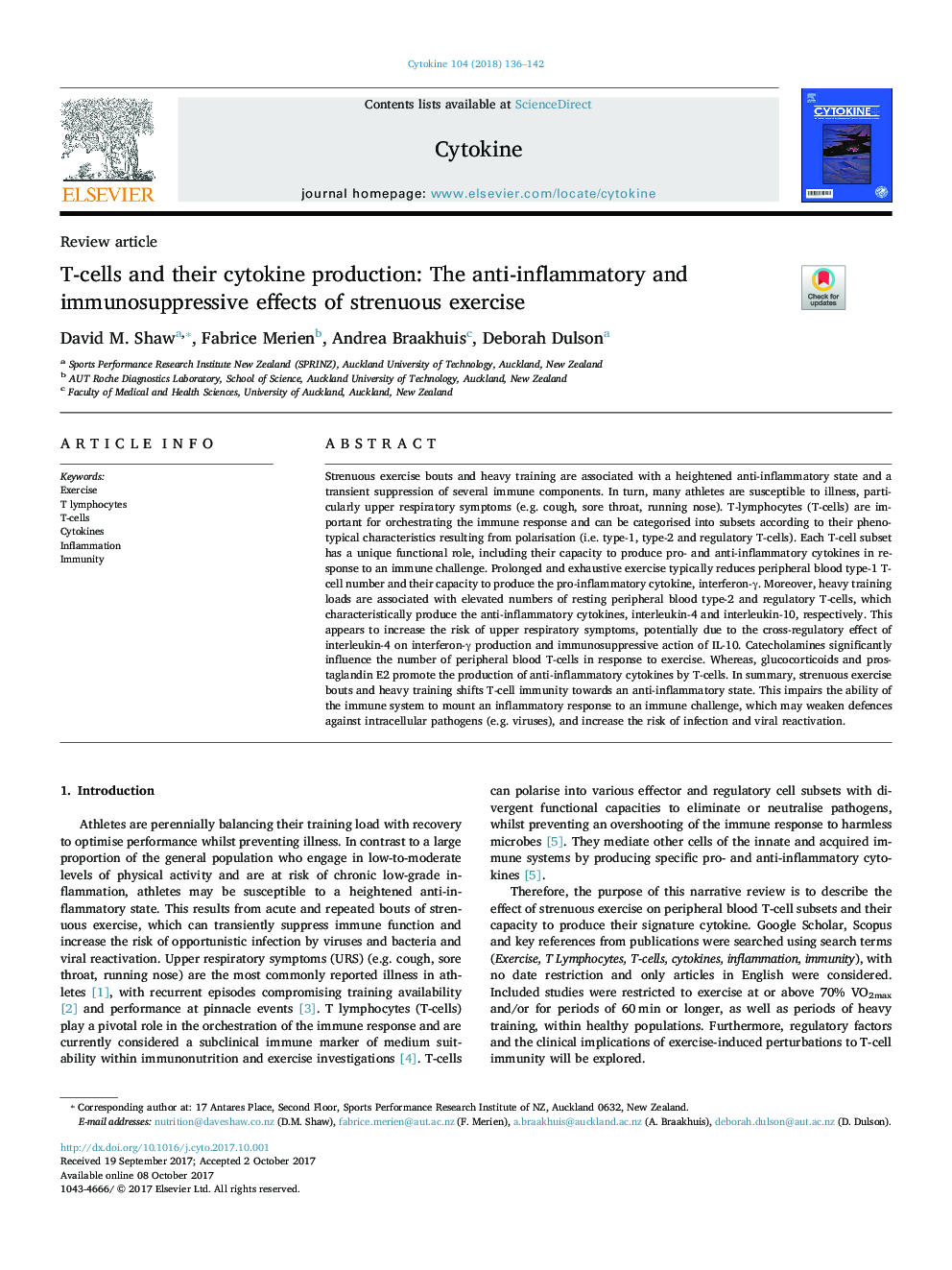| کد مقاله | کد نشریه | سال انتشار | مقاله انگلیسی | نسخه تمام متن |
|---|---|---|---|---|
| 8629048 | 1568708 | 2018 | 7 صفحه PDF | دانلود رایگان |
عنوان انگلیسی مقاله ISI
T-cells and their cytokine production: The anti-inflammatory and immunosuppressive effects of strenuous exercise
دانلود مقاله + سفارش ترجمه
دانلود مقاله ISI انگلیسی
رایگان برای ایرانیان
کلمات کلیدی
موضوعات مرتبط
علوم زیستی و بیوفناوری
بیوشیمی، ژنتیک و زیست شناسی مولکولی
علوم غدد
پیش نمایش صفحه اول مقاله

چکیده انگلیسی
Strenuous exercise bouts and heavy training are associated with a heightened anti-inflammatory state and a transient suppression of several immune components. In turn, many athletes are susceptible to illness, particularly upper respiratory symptoms (e.g. cough, sore throat, running nose). T-lymphocytes (T-cells) are important for orchestrating the immune response and can be categorised into subsets according to their phenotypical characteristics resulting from polarisation (i.e. type-1, type-2 and regulatory T-cells). Each T-cell subset has a unique functional role, including their capacity to produce pro- and anti-inflammatory cytokines in response to an immune challenge. Prolonged and exhaustive exercise typically reduces peripheral blood type-1 T-cell number and their capacity to produce the pro-inflammatory cytokine, interferon-γ. Moreover, heavy training loads are associated with elevated numbers of resting peripheral blood type-2 and regulatory T-cells, which characteristically produce the anti-inflammatory cytokines, interleukin-4 and interleukin-10, respectively. This appears to increase the risk of upper respiratory symptoms, potentially due to the cross-regulatory effect of interleukin-4 on interferon-γ production and immunosuppressive action of IL-10. Catecholamines significantly influence the number of peripheral blood T-cells in response to exercise. Whereas, glucocorticoids and prostaglandin E2 promote the production of anti-inflammatory cytokines by T-cells. In summary, strenuous exercise bouts and heavy training shifts T-cell immunity towards an anti-inflammatory state. This impairs the ability of the immune system to mount an inflammatory response to an immune challenge, which may weaken defences against intracellular pathogens (e.g. viruses), and increase the risk of infection and viral reactivation.
ناشر
Database: Elsevier - ScienceDirect (ساینس دایرکت)
Journal: Cytokine - Volume 104, April 2018, Pages 136-142
Journal: Cytokine - Volume 104, April 2018, Pages 136-142
نویسندگان
David M. Shaw, Fabrice Merien, Andrea Braakhuis, Deborah Dulson,